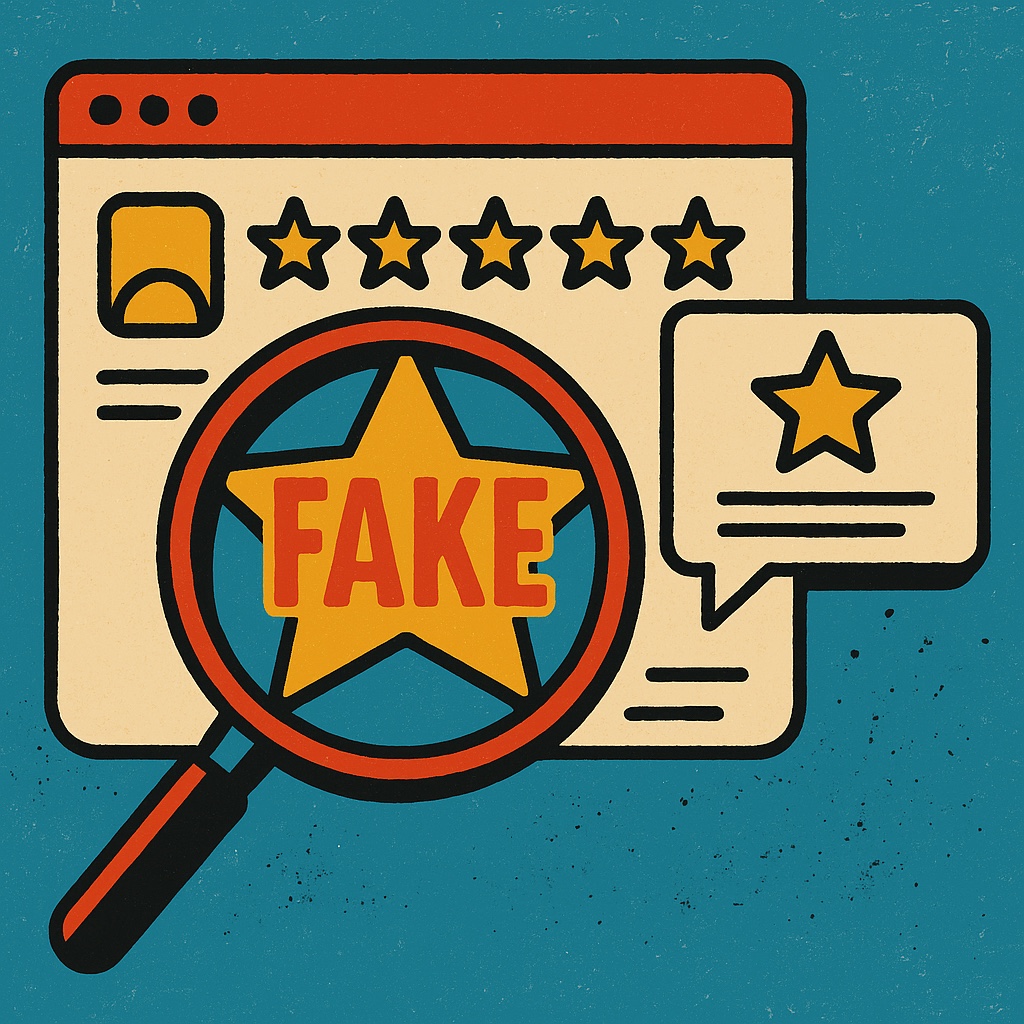The Great Review Con Game: Why Trust Is Dying (and What You’re Going to Do About It)

Online reviews were supposed to be the ultimate truth serum for e-commerce. Real people. Real experiences. Real trust.
Now? They’re a swamp. And if you’re a premium DTC brand still relying on them to close sales, you’re playing Russian roulette with your reputation.
For a practical look at why buying fake reviews is a dead-end strategy, read our analysis in The $10 Review Trap.
The uncomfortable truth: somewhere between “a few” and “holy crap, that’s a lot” of those reviews are fake. Depending on the category, that’s 4% to 14%. And if you think, “That’s not too bad,” remember — one shady competitor with a $200 budget can bury your hard-earned five stars in a weekend.
The damage isn’t just bruised egos. Fake reviews are estimated to cost the global economy $152 billion a year. That’s not a typo. That’s enough to buy every single person in the U.S. a VERY nice dinner… and dessert.
How We Got Here: From Lonely Astroturfer to Industrial-Scale BS Factory
Once upon a time, fake reviews were the work of a desperate intern with a burner Gmail account.
Now? It’s a global black market. Review farms. AI bots. “Product testing” scams where the “test” is to leave a glowing 5-star. Amazon alone says it blocked 200 million fake reviews in 2022. That’s more than one every second.
And here’s the kicker — some sellers budget for fakes. They know one extra star on Yelp can mean a 5–9% sales bump. So they pay $2 per fake review like it’s just another line item next to “Google Ads” and “fancy tissue paper for unboxing videos.”
Oh, and AI has poured jet fuel on this mess. In minutes, a bad actor can spin up hundreds of suspiciously enthusiastic reviews that sound and look like real customers, complete with unboxing pics, quirky personal anecdotes, and that “written at midnight by someone who’s had too much wine” vibe.
Why Premium Brands Are Juicy Targets
If you sell a $20 gadget, you need thousands of reviews to move the needle. If you sell a $2,000 espresso machine, you might only have 20 reviews total — which means one fake review can swing perception overnight.
Luxury and high-consideration products live and die on trust. Your customers want to believe you, but they’re scanning those stars like a hawk. When your rating dips because some joker overseas got paid to write “smells like plastic” … it hurts.
And here’s the insult: your honest 4.5 stars can look “worse” than the knock-off brand’s perfect 5.0 — even when that perfection is built on a pile of lies.
The Regulatory Hammer Is Coming Down
The U.S., EU, UK, Australia… regulators are fed up. The FTC now has the power to fine you over $50K per fake review. And yes, that includes reviews planted by “helpful” third-party sellers or your marketing agency.
In Europe, fines can hit 4% of global revenue. Australia has already slapped multi-million-dollar penalties on brands caught manipulating reviews.
Ignorance is not a defense. “We didn’t know our agency was doing it” won’t save you.
So, What’s a Brand Leader to Do?
Here’s the not-so-sexy truth: there’s no quick hack to fix this. You have to rebuild trust the old-fashioned way — with a little sweat, a little transparency, and a lot of consistency.
1. Audit everything. Everywhere your products have reviews, check for red flags. Spikes in ratings. Weirdly similar wording. Ghost customer accounts.
2. Go zero-tolerance on fakery. Put it in contracts. Educate your team. If your agency is offering “review management” and won’t detail exactly how… please run!
3. Incentivize ethically (and transparently). Rewards for reviews? Fine. Rewards only for positive reviews? Illegal.
4. Be radically responsive. Engage with the good, the bad, and the “this review makes no sense.” A great reply to a bad review can increase trust.
5. Push verified and proof-of-purchase reviews. On your own site, on marketplaces, everywhere. Bonus if they include real customer photos or videos.
6. Diversify your trust signals. Customer stories, in-person events, expert endorsements — anything that’s harder to fake than a paragraph of text.
7. Consider asking your customers to be advocates. A one-time verified review is great, but someone who says I’ll answer questions about my experience with the product over time is worth more than gold.
Learn how to systematically turn your customers into advocates in our guide: From Quiet to Choir.
The Playbook for a Post-Review World
Stop treating reviews as the holy grail of social proof. They’re a piece of the puzzle, not the whole picture.
Build your own moat of trust with things fakes can’t replicate:
- Direct referrals from real customers
- Rich, proof-driven content (video testimonials, behind-the-scenes)
- Transparent responses to feedback
- Experiences that let prospects touch, try, and feel the product
Because here’s the real controversy: in a world where everyone’s chasing 5-stars, the brands that own their imperfections are going to win. The ones who show up, tell the truth, and prove it in ways you can’t fake.
So, Founder… CMO… Marketing lead… this is your wake-up call. Don’t wait until your star rating gets torpedoed or your brand name shows up in an FTC press release. Start now. Get loud about your authenticity. Make “trust” your loudest competitive advantage.
Your competitors can fake reviews. They can’t fake the relationship you build with your customers.


